Medically reviewed by Dr. Ramesh Gaddam, M.D. — Written by Sumalatha, D.N.H.E
After dental surgery, it’s important to allow your body to heal. Good nutrition is essential for recovery because your body needs nutrients to repair tissues.
However, you can’t eat your regular diet right away; chewing can dislodge blood clots or stitches needed for healing.
To help you choose the right foods and heal faster, we’ve created a list of 50 soft foods to eat after dental surgery.
Some foods might need to be soaked in milk or broth before eating, which allows you to enjoy your favorites without hurting your mouth.
For instance, soaking bread in soup makes a soft, nutritious, and filling snack that’s safe to eat.
50 Soft Foods To Eat After Dental Surgery
- Yogurt
- Cottage cheese
- Pudding
- Custard
- Ricotta cheese
- Cream cheese
- Applesauce
- Mashed potatoes
- Sweet potato mash
- Smoothies
- Avocado
- Banana
- Applesauce
- Scrambled eggs
- Oatmeal
- Cream of wheat
- Polenta
- Rice pudding
- Macaroni and cheese
- Soft noodles
- Mashed cauliflower
- Soufflé
- Pancakes (softened with syrup)
- Soft muffins (banana, pumpkin)
- Soft bread soaked in milk or broth
- Ice cream
- Sorbet
- Gelatin
- Fruit purees (peach, pear)
- Smooth soups (tomato, pumpkin)
- Broths (chicken, vegetable)
- Pureed vegetable soups (carrot, broccoli)
- Cream soups (mushroom, chicken)
- Hummus
- Soft tofu
- Fish (soft and flaky, like salmon)
- Shredded chicken (softened in broth)
- Ground turkey (cooked tender)
- Mashed beans (black beans, chickpeas)
- Soft-cooked lentils
- Custard pie filling
- Soft risotto
- Soft pancakes (plain or flavored)
- Mashed peas
- Avocado spread
- Soft cereals (soaked in milk)
- Bread pudding
- Blended cottage cheese
- Soft tortilla with melted cheese
- Smooth nut butter (peanut, almond)
Dos and Don’ts After Dental Surgery
Dos
- Follow Your Dentist’s Instructions
- Stick to Soft Foods
- Stay Hydrated
- Rinse Gently
- Keep Your Head Elevated
- Use Ice Packs
- Take Prescribed Medications
- Rest and Relax
- Maintain Oral Hygiene
- Monitor for Complications
Don’ts
- Avoid Hard or Crunchy Foods
- Don’t Use Straws
- No Smoking or Alcohol
- Avoid Hot Foods and Beverages
- Don’t Touch the Surgical Site
- Avoid Vigorous Rinsing or Spitting
- No Strenuous Activities
- Don’t Skip Meals
- Avoid Carbonated Drinks
- Don’t Ignore Pain or Unusual Symptoms
What Not to Eat After Dental Surgery
Hard or Crunchy Foods
- Nuts
- Chips
- Raw vegetables
Chewy Foods
- Tough meats
- Bagels
- Gummy candies
Sticky Foods
- Caramel
- Chewing gum
- Taffy
Spicy Foods
- Hot peppers
- Spicy sauces
- Curries
Acidic Foods and Drinks
- Citrus fruits
- Tomato sauce
- Soda
Hot Foods and Beverages
- Hot coffee
- Hot tea
- Soup (if too hot)
Alcoholic Beverages
- Beer
- Wine
- Spirits
Foods with Small Seeds or Grains
- Strawberries
- Poppy seed muffins
- Sesame seed buns
Foods that Require Sucking
- Hard candies
- Lollipops
- Popsicles
Crunchy Fruits
- Apples
- Pears
- Raw carrots
Hygiene Practices During Recovery to Prevent Infections
Maintain Oral Hygiene
Brush Gently: Use a soft-bristled toothbrush to clean your teeth carefully, avoiding the surgical area to prevent irritation.
Use Antibacterial Mouthwash: Rinse with a mild, alcohol-free mouthwash to help kill bacteria and keep the mouth clean.
Rinse with Saltwater
Why: Saltwater helps reduce bacteria and promotes healing by keeping the area clean and reducing inflammation.
How: Mix 1/2 teaspoon of salt in a cup of warm water and gently rinse after meals.
Avoid Rinsing Vigorously
Why: Vigorous rinsing can dislodge blood clots or stitches and hinder healing.
How: Rinse gently to avoid disturbing the surgical site.
Keep Hands Clean
Why: Clean hands prevent transferring germs to the mouth.
How: Wash your hands thoroughly with soap and water before eating or touching your face.
Disinfect Utensils and Eating Surfaces
Why: Clean utensils and surfaces reduce the risk of infection.
How: Use hot, soapy water or a dishwasher to clean utensils and eating surfaces thoroughly.
Avoid Smoking and Alcohol
Why: Smoking and alcohol can interfere with healing and increase the risk of infection.
How: Refrain from smoking and consuming alcoholic beverages during recovery.
Follow Post-Surgical Care Instructions
Why: Adhering to your dentist’s specific instructions helps ensure proper care and reduces the risk of complications.
How: Follow guidelines provided by your dentist, including any prescribed medications or additional care recommendations.
Monitor for Signs of Infection
Why: Early detection of infection can prevent complications.
How: Watch for signs like increased pain, swelling, redness, or discharge, and contact your dentist if any symptoms occur.
Why Should You Eat Only Soft Foods?
Prevents Dislodging Blood Clots
Chewing hard or crunchy foods can dislodge blood clots, which are crucial for proper healing of the extraction site.
Loss of blood clots can lead to a painful condition called dry socket, which delays healing.
Reduces Risk of Infection
Soft foods are less likely to irritate the extraction site, reducing the risk of infection.
Less irritation means fewer chances of introducing bacteria into the healing area.
Minimizes Pain and Discomfort
Soft foods require less chewing, which minimizes movement and pressure on the extraction site.
Reduces pain and discomfort during eating and promotes a more comfortable recovery.
Promotes Faster Healing
Soft foods are easier on the healing tissues, allowing the gums to recover more quickly.
Faster healing leads to a smoother and less complicated recovery process.
Avoids Damage to Stitches
If stitches are used, hard or abrasive foods can potentially damage them.
Proper care helps prevent complications that might require additional dental visits.
Facilitates Easier Eating
Soft foods are easier to manage and swallow, especially if you’re dealing with pain or swelling.
Ensures adequate nutrition without the stress of chewing or discomfort.
Conclusion
After tooth extraction, maintaining a diet of soft foods is essential for promoting proper healing and minimizing discomfort.
Soft foods help prevent complications such as dislodging blood clots and causing irritation or infection at the extraction site.
They ensure that you can receive adequate nutrition without putting undue stress on the healing tissues.
By following these guidelines and being mindful of what you eat, you can support a smoother, faster recovery and reduce the risk of complications, allowing you to return to your normal diet and activities more quickly.
Frequently Asked Questions (FAQs)
People searched frequently about soft foods after Dental Surgery / Tooth Extraction are:
What are Soft Foods After Tooth Extraction?
Soft foods after tooth extraction include items that are easy to chew and swallow without irritating the surgical site.
Examples are yogurt, mashed potatoes, scrambled eggs, smoothies, applesauce, and soups.
What is Soft Indian Food for Toothache?
Soft Indian foods for toothache include khichdi (a rice and lentil dish), upma (a savory semolina dish), idli (steamed rice cakes), and soft dal (lentil soup).
These are gentle on the teeth and easy to consume.
What Indian Food Can You Eat After Tooth Extraction?
After tooth extraction, you can eat khichdi, soft dals, curd rice, idli, and mashed vegetable curries.
These foods are soft and nutritious, aiding in a comfortable recovery.
What Foods Help Heal After Tooth Extraction?
Foods that help heal after tooth extraction include protein-rich items like yogurt, cottage cheese, and soft-cooked eggs.
Hydrating foods like soups and smoothies also support recovery.
Additionally, nutrient-dense soft vegetables and fruits like avocados and mashed bananas are beneficial.
Can I Eat Rice After Filling?
Yes, you can eat rice after a dental filling. However, ensure it is well-cooked and soft to avoid putting too much pressure on the filled tooth.
How Long After Tooth Extraction Can I Eat Normally?
You can typically start eating normally about 1-2 weeks after tooth extraction, depending on the complexity of the surgery and your healing progress.
Always follow your dentist’s specific recommendations.
Can I Brush My Teeth After Tooth Extraction?
Yes, you can brush your teeth after tooth extraction, but avoid the extraction site. Use a soft-bristled toothbrush and be gentle around the affected area.
Can I Drink Milk After Tooth Extraction?
Yes, you can drink milk after tooth extraction. It’s a good source of protein and calcium, which can aid in recovery.
Can I Eat Curd After Tooth Extraction?
Yes, you can eat curd after tooth extraction. It’s soft, easy to swallow, and provides beneficial probiotics.
Is Ice Cream Good After Tooth Extraction?
Yes, ice cream can be soothing after tooth extraction. The cold can help reduce swelling and provide comfort. However, avoid flavors with nuts or hard pieces.
Can I Eat Bananas After Tooth Extraction?
Yes, bananas are a great option after tooth extraction. They are soft, easy to chew, and rich in nutrients.
What Fruit is Good for Tooth Extraction?
Soft fruits like bananas, avocados, and peaches (without the skin) are good options. Applesauce is also a great choice.
Can I Eat Maggi After Tooth Extraction?
Maggi or other instant noodles can be eaten if they are well-cooked and soft. Avoid eating them too hot and ensure they are not spicy.
What Cannot Eat After Tooth Extraction?
Avoid hard, crunchy, and sticky foods such as nuts, chips, popcorn, and chewing gum. Also, avoid hot, spicy, and acidic foods that can irritate the extraction site.
Medically reviewed by Dr. Ramesh Gaddam, M.D.

General Physician, Diabetologist, and Critical Care Specialist.
Discover more from Health Build-Up
Subscribe to get the latest posts sent to your email.
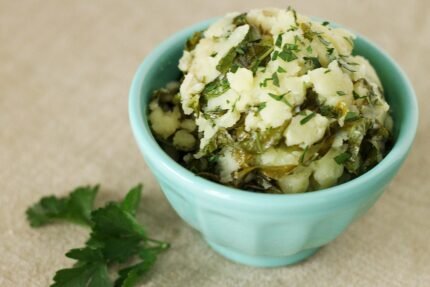
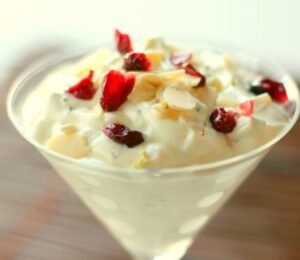
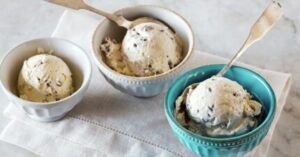
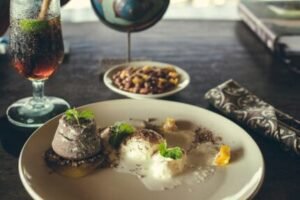
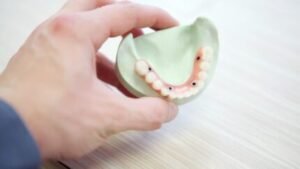
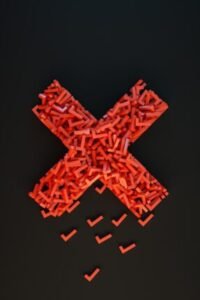
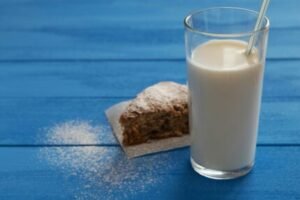
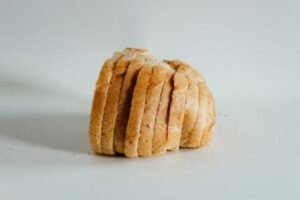
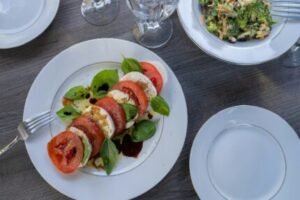


1 thought on “50 Soft Foods to Eat After Tooth Extraction (Dental Surgery)”
Comments are closed.